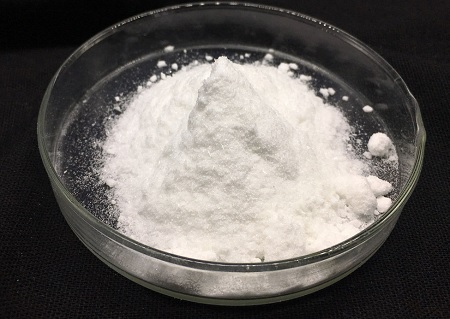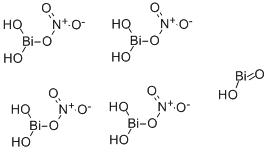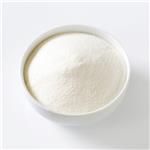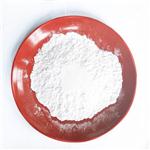Description
Bismuth subnitrate, also referred to as bismuth oxynitrate or bismuthyl nitrate, is a highly water-soluble crystalline compound that has been used as a treatment for duodenal ulcers and anti-diarrheic agent. The use of bismuth substrate as an active ingredient in over-the-counter antacids is approved by the FDA.

Bismuth Subnitrate is a basic salt that contains the equivalent of not less than 79.0 percent of bismuth trioxide (Bi2O3),calculated on the dried basis.It is both odorless and tasteless, and is used in bleaching and freckle creams, and hair dyes.
Bismuth subnitrate has been used to induce metallothionein in heart tissue and kidneys and to attenuate the toxicity of Adriamycin and cisplatin compounds, respectively.
Chemical Properties
White, heavy, Slightly hygroscopic powder
Uses
Bismuth subnitrate (BiNO3) is used in the cosmetics industry and to make ceramic and
enamel glazes.
Uses
It is used pharmaceutically in wound dressing, ointment component and as an antiacid. In cosmetics it is used as a cosmetic white pigment. Used in Ceramic glazes and enamel fluxes.
Uses
manufacture of bismuth fluxes for enamels; in cosmetics.
brand name
Mammol (Abbott).
Flammability and Explosibility
Non flammable
Pharmacology
Bismuth subnitrate acts as an antacid that exert protective effects on the gastric mucosa. In a double-blind endoscopically controlled study, bismuth substrate was demonstrated to be effective for symptomatic relief in duodenal ulcers. In the alcohol model of mucosal injury in the rat, bismuth substrate was shown to be cytoprotective. In a randomized clinical study consisting of patients with H. pylori-associated duodenal ulcer, adjunctive use of colloidal bismuth subnitrate in a short treatment regimen with omeprazole and clarithromycin resulted in improved eradication rate of H. pylori.
Mode of action
Based on the findings of a clinical investigation in patients with duodenal ulcer disease and healthy volunteers receiving oral bismuth subnitrate tablets, the protective effects of bismuth subnitrate may be secondary to endogenous mucosal prostaglandin (PGE2) production, which is one of the deficient factors observed in peptic ulcer disease. Antacid neutralizing activity of bismuth subnitrate was demonstrated to have a significant postprandial effect on gastric pH.






